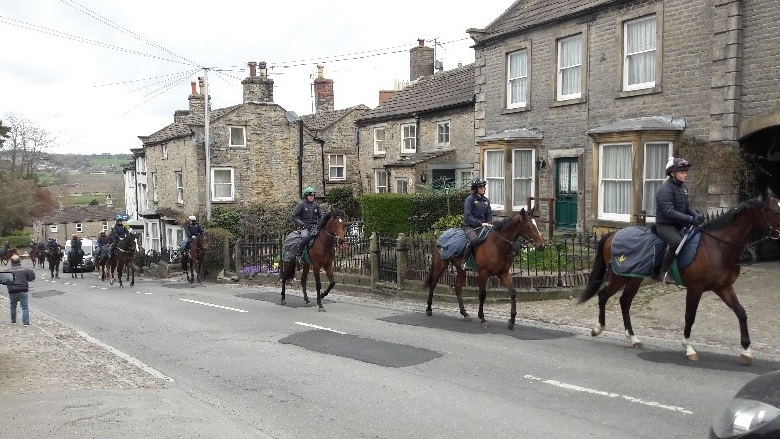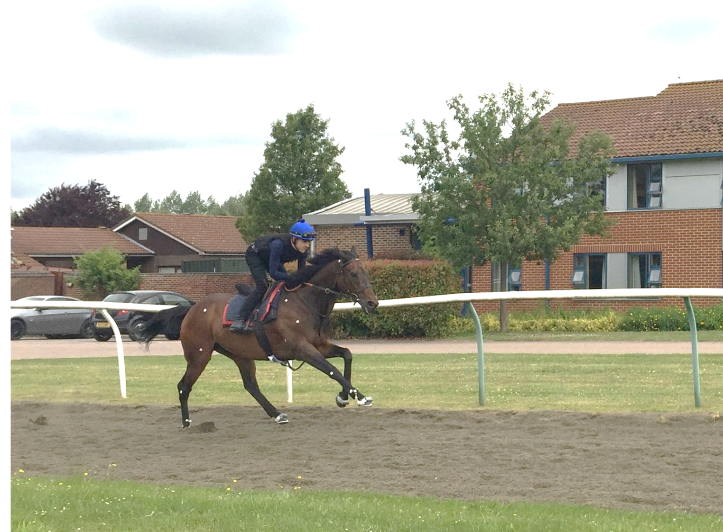HBLB grant awarded to investigate coordination dynamics in racehorse-rider dyads trotting over turf, synthetic and tarmac surfaces
A new Horserace Betting Levy Board (HBLB) “small grant” has been awarded to Dr Kate Horan and Dr. Thilo Pfau to study coordination dynamics in racehorse-rider dyads trotting over turf, synthetic and tarmac surfaces and is a follow-up study to the ongoing HBLB funded “S.A.F.E.R.” project (shoe assessment for equine racing) investigating horse dynamics in relation to different shoeing conditions in galloping horses.
There is a need to better understand hoof-surface interactions and the resulting impact they have on horse-rider coordination patterns. Riding racehorses is a high-risk profession and optimising safety alongside performance is paramount. This study will assess hoof kinematics in conjunction with racehorse-rider interactions over three surface types at trot, with the rider adopting two contrasting riding styles. The selected surfaces are expected to initiate fundamental differences in hoof kinematics, such as slip distance, and ‘stride to stride’ variation: tarmac (hard and consistent), turf (variably hard and inconsistent) and artificial (soft and intermediate consistency). The rider will complete ridden trials in both a sitting and two-point seat position, to facilitate a comparison of ridden states in which maximum and minimum horse-rider coupling is expected.
Evaluating horse-rider coordination dynamics at trot is essential for understanding how their safety and stability can be optimized when travelling over varied terrains to access gallop tracks. This is particularly relevant for riders guiding young Thoroughbreds in training to gallop tracks, and at sites that have already been identified as posing risks through horses slipping, such as tarmac roads. For example, in Middleham, Yorkshire, over 500 racehorses are ridden daily along public roads to access training gallops.

In this study, accelerometers will be mounted to horses’ hooves and inertial measurement units (IMUs) will be fitted to the poll, tuber coxae, sacrum, girth and saddle of horses and the pelvis, back, legs and helmet of the rider. The horse-rider dyads will also be filmed using high-speed video. These techniques will allow the researchers to quantify how the magnitude, stability and synchronization of horse and rider upper-body displacements vary according to hoof kinematic parameters (including hoof accelerations on impact and during push-off, and slip duration) during trot on different surfaces. The study will be completed over a two-month period in collaboration with The British Racing School in Newmarket.
This research is expected to have both safety and performance implications. Building up an empirical dataset of normative ranges for coordination dynamics between riders and their horses could enable race-training programs to offer feedback to riders on how they should adjust their body movements to enhance coordination patterns with their horse. It may offer an opportunity to become prophylactic with regards to reducing the risk of falls, improving horse comfort and preventing catastrophic injuries in equine athletes and their riders. In addition, the research may form a basis for future work exploring horse-rider coordination dynamics under different horseshoe-surface combinations, at faster gaits and over inclined surfaces. For example, understanding the influence of surfaces on horse-rider interaction may equip jockeys with strategies to enhance racing performance (e.g. speed) under particular conditions.

